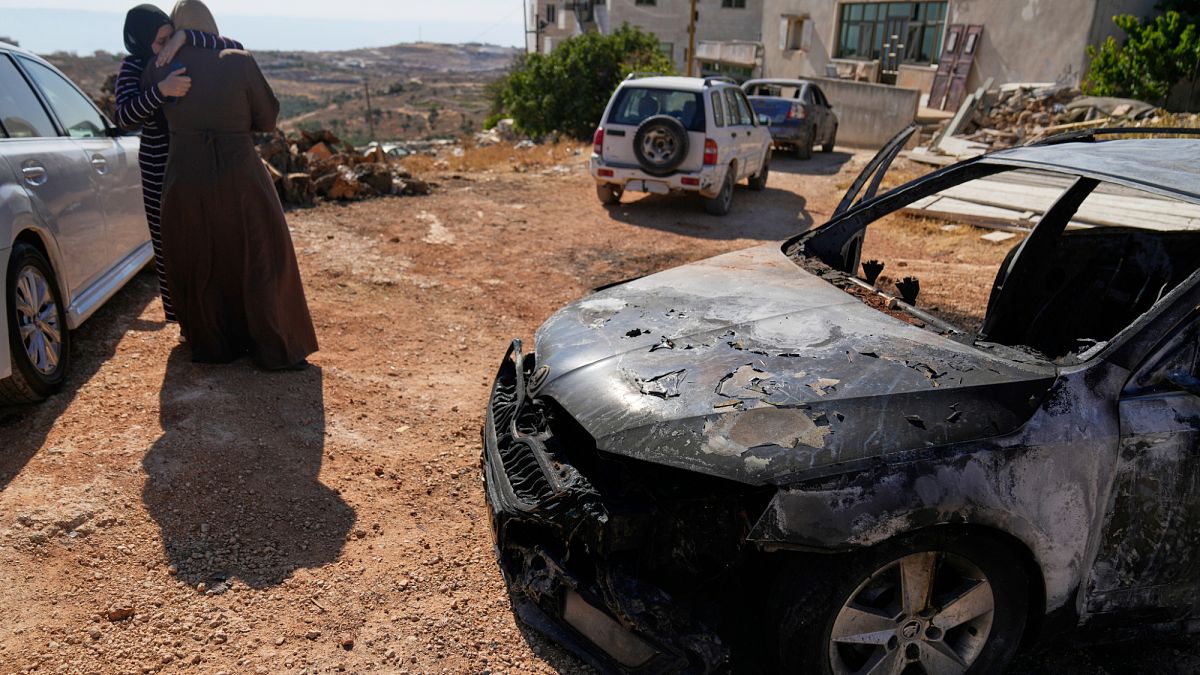

Recent developments in the Middle East have highlighted the region’s ongoing tensions, marked by deadly clashes and strategic military maneuvers. These events comprise a complex tapestry involving multiple actors, each playing pivotal roles on a global scale. As tensions persist, it is important to examine the outcomes and reverberations of these actions across the region and beyond.
In the persistently troubled area of the occupied West Bank, the region has witnessed renewed violence. Three Palestinians tragically lost their lives amid confrontations involving local Jewish settlers. These distressing incidents have been captured by CCTV footage circulated by human rights groups, providing stark visual evidence of the escalating conflict. This tragic loss underscores the protracted challenges faced by communities in this region, as they grapple with the complexities of opposing claims and territorial disputes.
Elsewhere in the Middle East, geopolitical tensions between the United States and Iran have resurfaced, underscored by a series of military actions. In a statement delivered with unwavering intent, Iran’s supreme leader, Ayatollah Ali Khamenei, remarked on an Iranian missile attack directed at a U.S. base in Qatar. This strike, characterized by the Ayatollah as a “slap to America’s face,” marks a significant act within the larger framework of U.S.-Iran relations. Despite the resulting damage, there were no casualties reported, allowing for a careful reflection on the attack’s symbolic implications rather than its human toll.
The Iranian leader’s comments coincide with ongoing rhetoric that amplifies the region’s unpredictability. Khamenei’s stern warning that Iran is prepared to target American military sites should the U.S. initiate further hostilities serves as a pointed reminder of the delicate balance of power that prevails. These developments come on the heels of a ceasefire with Israel, highlighting the layered complexity of Middle Eastern diplomacy and the continuous interplay of strategic interests.
In the United States, political divisions further accentuate the challenges in managing foreign policy. A scheduled intelligence briefing concerning U.S. military strikes on Iran’s nuclear facilities has left senators at an impasse. Diverging interpretations from Republican and Democratic lawmakers reflect ongoing partisan divides that complicate the consensus needed for coherent policy-making. While the Trump administration asserts the strikes were a tactical success, claims of Congressional stonewalling and debates over the scope of presidential authority in sanctioning unilateral military actions reveal the intricacies of governance in such sensitive matters.
In parallel, domestic and international political discourse continues to evolve. In Israel, discussions around humanitarian aid to Gaza have gained attention. Israel’s National Security Minister has advocated for a complete cessation of aid, citing concerns over Hamas’s potential appropriation of resources. This illustrates the intricate dynamics of humanitarian aid, where efforts to provide immediate relief must be balanced with the need to prevent empowerment of hostile entities. Such debates reflect broader considerations involving national security and ethical responsibilities in the provision of aid.
As these events unfold, they illuminate the persisting volatility and interconnectivity of Middle Eastern affairs. The series of actions and reactions demonstrate the intricacies of international diplomacy, the enduring challenges of fostering peace in the region, and the continual strive to maintain stability amid diverse interests. In contemplating these developments, it becomes evident that the path to lasting peace necessitates thoughtful engagement and cooperative efforts among global and regional actors, ensuring that negotiations and reconciliations are at the forefront of diplomatic endeavors.
Source: {link}
